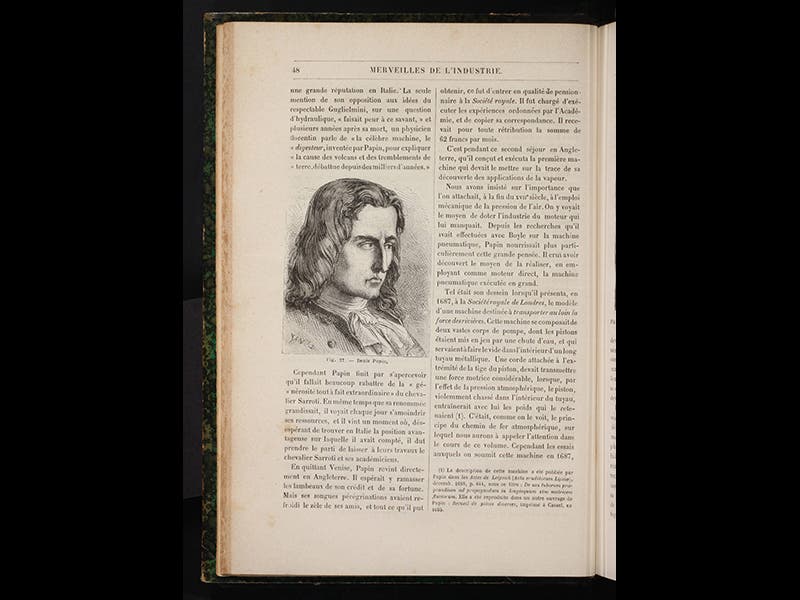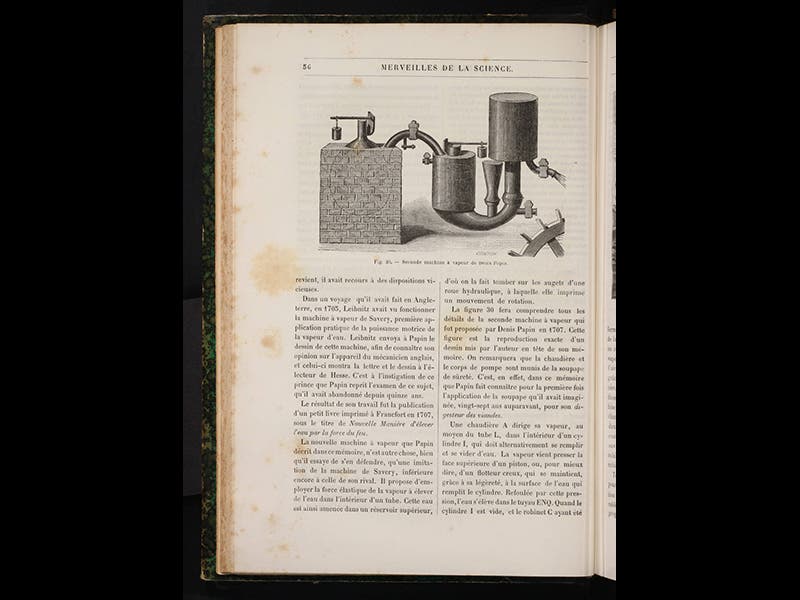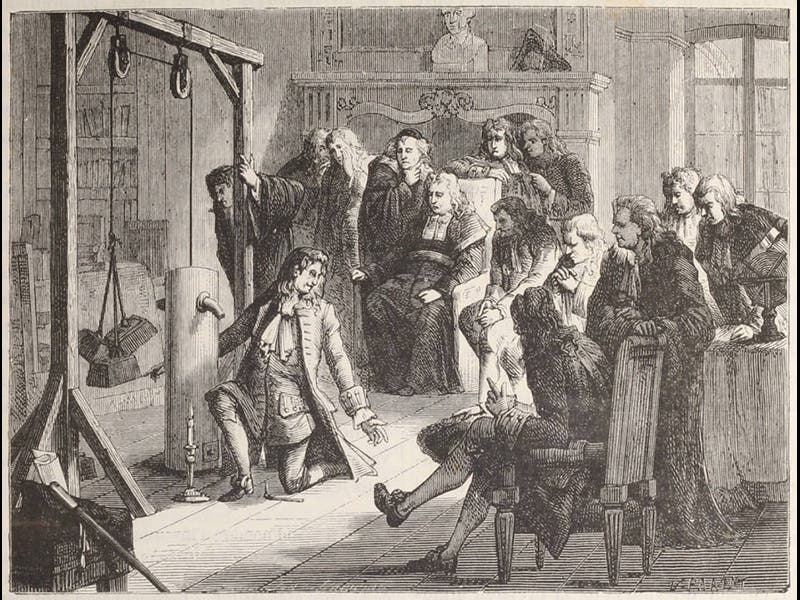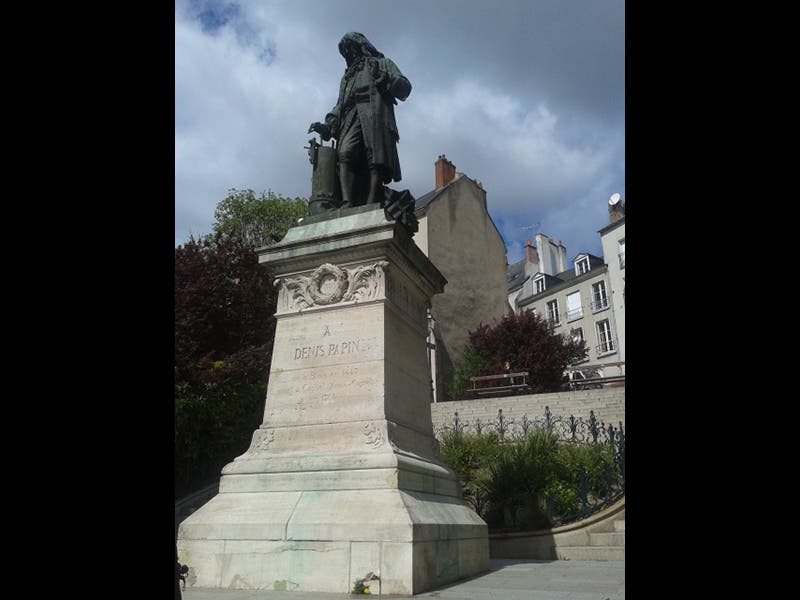Scientist of the Day - Denis Papin

Denis Papin, a French inventor, was born Aug. 22, 1647. Papin was a gifted machine craftsman, and he became an assistant to Christiaan Huygens in Paris in the 1670s, building vacuum pumps. He published a book on the subject in 1674, Nouvelles experiences du vide (New Experiments on the Vacuum), which we have in our collections, and from which the first image above is drawn.
Papin moved to London to build air pumps for Robert Hooke and the Royal Society of London. In 1679, he demonstrated his most sensational invention: a "digesting engine," in which steam under pressure was used to cook food and soften bones. Papin had invented the pressure cooker. One of the features of his "digester" was a pressure-relief valve, consisting of a small piston held in place by a weight that could move up and release steam when the pressure got too high. Apparently this piston valve gave Papin the idea for a steam-driven piston engine, for which he had constructed a model by 1690. However, his engine used steam under pressure, while most other experimenters of the day were building "atmospheric engines," in which the steam was merely used to remove air from a piston chamber, and then, when the steam condensed, the pressure of the atmosphere moved the piston.
Papin’s steam engine often gets left out of the story of the development of steam power, which gives more attention to Thomas Savery, Thomas Newcomen, and James Watt. Most of Papin's life was like this, as he and his achievements were generally unappreciated and unrewarded. Since, as a Huguenot, he was unable to return to France, he spent some years in Germany, before returning to London in 1707, looking for a curatorial position at the Royal Society. He did not get one, and he died in poverty in 1713.
But in France, Papin is now a hero. His resurgence began when Louis Figuier published his four-volume Les merveilles de la science (1867), in which Papin’s importance for steam power is trumpeted. Three of the images above are from this work, showing Papin’s portrait (second image), his second steam engine (third image), and a demonstration he gave in Marburg in Germany (fourth image). In 1880, a statue of Papin was erected at the top of the grand staircase in his home city of Blois (fifth image).
There is a full-size replica of Papin’s second engine in the Musée des Arts et Metiers in Paris (sixth image).
Dr. William B. Ashworth, Jr., Consultant for the History of Science, Linda Hall Library and Associate Professor, Department of History, University of Missouri-Kansas City. Comments or corrections are welcome; please direct to ashworthw@umkc.edu.











